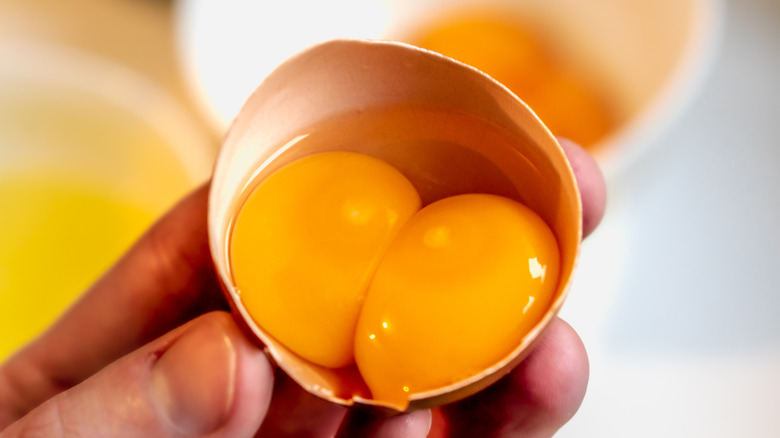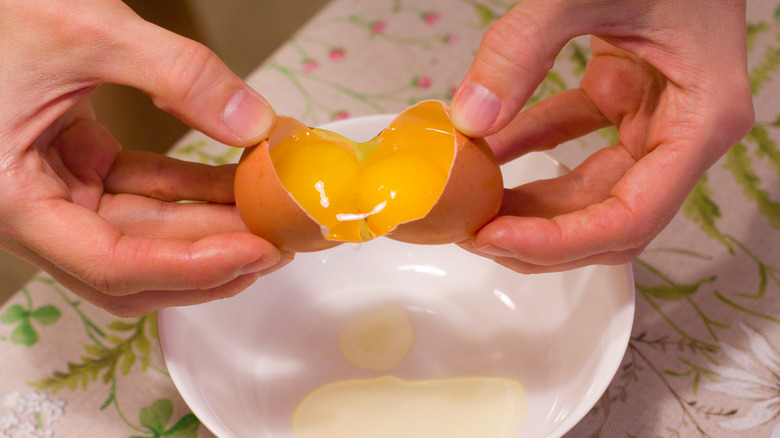Cracked A Double-Yolk Egg? What You Need To Know Before Baking With It
What with the exorbitant price of eggs (to say nothing of how Trader Joe's has placed limits on the number of cartons you can buy at once, and Costco can't keep them stocked), cracking open an egg and finding a double yolk might feel like a real Yahtzee! moment. But when it comes to baking, Odette D'Aniello, baking expert and CEO at Dragonfly Cakes, told Food Republic in an exclusive interview, "Double-yolk eggs can definitely shift the balance in a recipe." However, she was quick to add, "Not always in a bad way."
"In most cases," she continued, "I treat a double-yolk as a happy accident, especially in recipes that aren't super finicky, like muffins, quick breads, or cookies." They can, she said, lead to a richer outcome, thanks to the extra fat, "which can make baked goods a little softer or more tender." That said, D'Aniello cautioned, the double yolk won't suit every bake. "If you're working with a recipe that depends on precise structure — like macarons, chiffon cake, or anything with a delicate crumb — you might want to set that double-yolk aside and use a properly measured egg." However, she added, sometimes the protein-to-fat ratio is set in stone, and too much yolk can "make the bake dense or greasy."
How to adjust when you weren't expecting a double-yolk egg
When a recipe calls for two eggs and you've already cracked one, reach for the second, crack it in, and see two yolks, you might be wondering if there are any adjustments you need to make to the rest of your recipe, provided it's a recipe that can withstand an adaptation or two. A good rule of thumb is two yolks equals about one and a quarter eggs, according to Odette D'Aniello. If you don't want too much of a change to your bake, she recommends to "cut back just a touch on the fat elsewhere if you're nervous about balance."
For example, if you were making these Swirly Cinnamon Honey Bun Cookies, instead of an entire cup of butter, or an entire tablespoon of buttermilk (or whole milk), you might use just a little bit less than that full amount — cut back perhaps half a tablespoon of the butter, or use just under a full tablespoon of milk. If you're baking, as D'Aniello said, something less forgiving, like macarons, and you've already cracked the double-yolk egg into your mixing bowl, rather than try to shift around ingredient amounts, you can try actually going in with a clean hand and gently lifting out the extra yolk; as long as you use soft fingers, you should be able to remove it without breaking it.


